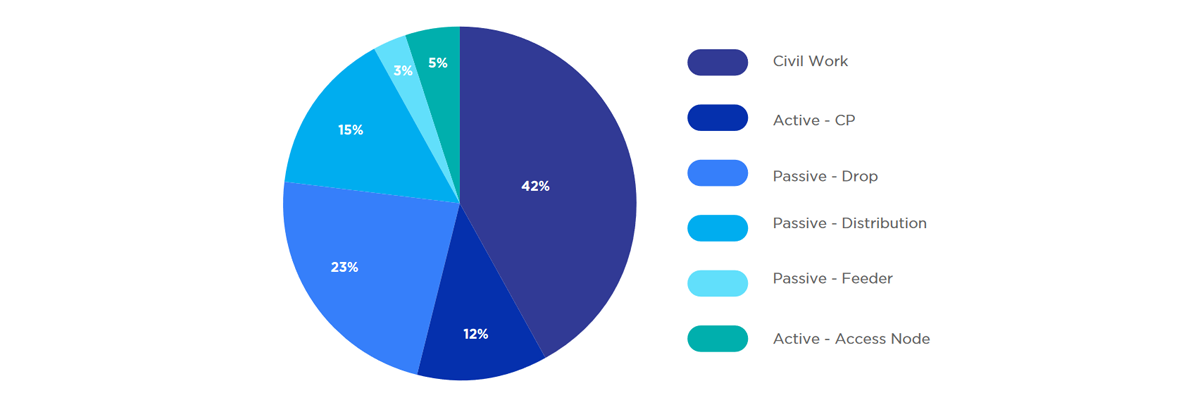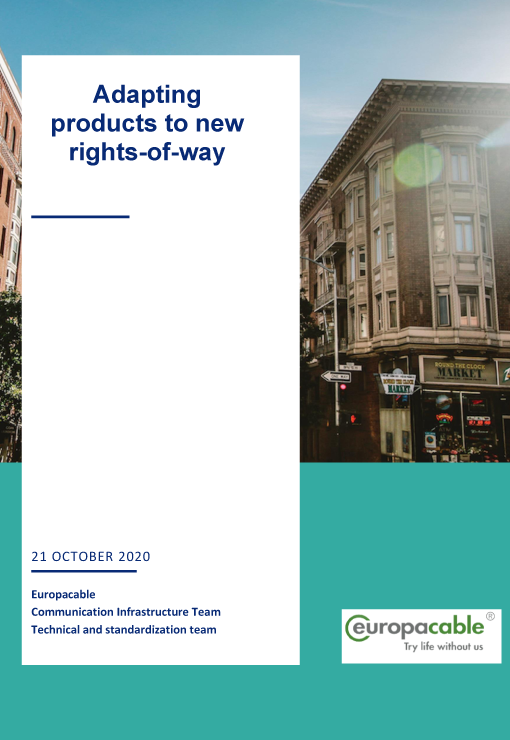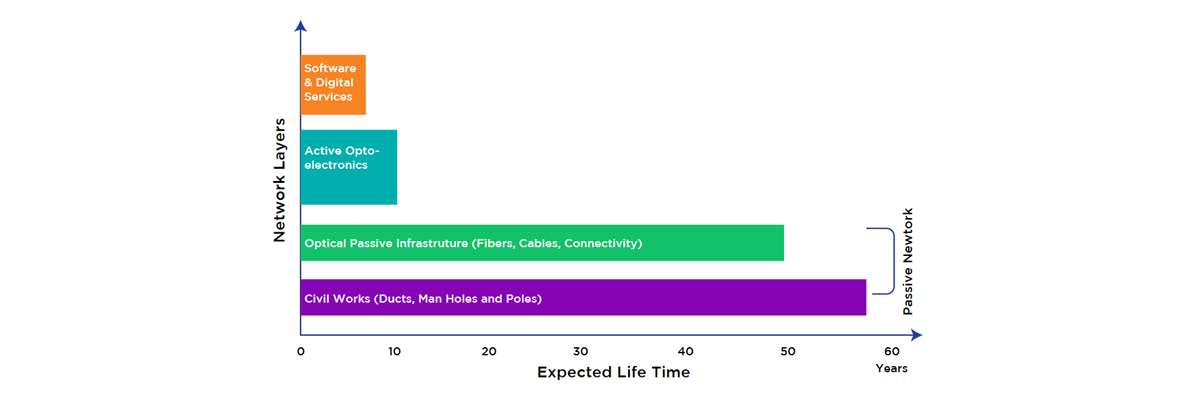Two WhitePapers available from Europacable

Europacable, the European Association of leading wire and cable producers, has recently launched two WhitePapers: “Expected Life Time of Passive Optical Infrastructure” and “Adapting Products to New Rights-of-Way”. NEXST spoke with Philippe Vanhille, Chaiman of Europacable Communication Infrastructure Team, to find out more.
“Decision makers involved in developing key infrastructure often lack product knowledge,” explains Philippe Vanhille. “Therefore, in the context of trying to build the network as quickly and cost-effectively as they can, they may think all optical cables are the same, resulting in bad decisions. It is important for us to help these decision makers learn more about cabling products and the responsibility they are taking when making these decisions - hence these whitepapers.”

Philippe Vanhille
Chaiman of Europacable Communication Infrastructure Team
Expected Life Time of Passive Optical Infrastructure
The expected lifetime of passive optical infrastructure impacts network OPEX over a 30 - 50 year period. Operators planning new passive optical infrastructure to support FTTH or 5G applications are generally more focused on CAPEX than OPEX. However, this WhitePaper argues, it is critical to consider the dichotomy between network CAPEX and OPEX, when prioritizing between deployment practices and component selection. It is vital to take into account the installation process and operations and maintenance activities for 30 to 50 years.
“We see waves of new technologies coming towards us: 4G, 5G, 6G, cloudization, edge computing, IoT, automated cars, Industry 4.0, smart buildings, and there is much more to come, even though this has not been defined yet. None of these technologies will work if not supported by a very dense and highly reliable optical fibre network connecting all antennas, buildings, businesses, homes, and more. Construction of this passive infrastructure (essentially made up of fibres, cables and connectors) is expensive and takes time. Moreover, these passive components have a lifetime that goes beyond 20 to 30 years. So it is essential to bear in mind that they will have to support the digital technologies of 2040/2050!”


“The use of more robust optical fibres (bend-insensitive fibres, in particular), higher quality raw materials, and ongoing improvement of engineers’ cable design skills for specific environments have significantly improved cable lifetimes. On the one hand, a cable’s multi-decade-lifetime is inevitably determined by mechanical stress, humidity, animal aggressions, and thermal cycles. On the other hand, cable cost is a small part of the total investment but enables vast savings in terms of civil works and network reliability. My recommendation to decision makers: don’t compromise on the quality of the components that should support your network for many, many years! A short-term ‘quick and dirty’ approach will inevitably lead to a much higher total cost of ownership, hence much less value creation for the investor.”
CAPEX Breakdown



Adapting Products to New Rights-of-Way
FTTx deployments impose new challenges for installation of cables in external and in-building environments. This WhitePaper reviews the most popular new rights of way (RoW) and associated issues. It shows how the cable construction can adapt to these challenges, identifies the key enabling technologies with the new ITU-T G.657 bend insensitive fibres at the forefront.
“As optical networks grow in density and ubiquity, the question of available space becomes more critical: ducts are often already congested, and certain new technologies, such as 5G antennas that will increasingly appear everywhere in cities, will create the need to reach new locations. For optical cable makers it is essential to propose new products that bring fibre presence wherever it is needed, and also to make the network less invasive while improving the carbon footprint of network construction.”
“Europe is home to the global leaders of our industry, who are permanently investing in improving products’ safety, robustness, futureproofness, ease of installation, and carbon footprint. My advice to decision makers is to keep up with the latest optical fibre and cable developments. Don’t hesitate to contact us for technical advice. Choosing miniaturized products that are immune to bending and mechanical stress, and perfectly adapted to the right of way being considered, is the guarantee for building a network that will not lose its value with time and also a significant contributor to improving the carbon footprint of the network construction.”
“New products need to be at least as robust as previous generations, and perfectly compatible with legacy products installed in the same network. When these conditions are met, adoption of these superior products represents a true performance improvement without any consequence for what was done in the past: these miniaturized products based on bend-insensitive fibres are cheaper and faster to install, they enable installation of much more fibre in a defined space, they perform very well from a sustainability perspective: in other words, they create a lot of value!”

About Europacable
Founded in 1991, Europacable is the voice of all leading European wire and cable producers. Europacable members include the largest cable makers in the world providing global technology leadership, as well as highly specialized small- and medium sized businesses from across Europe. The product scope of our members covers the full range of energy and communication cables. Globally our members employ over 80.000 people of which more than 50% in Europe generating a worldwide turnover over € 70 billion in 2020.





